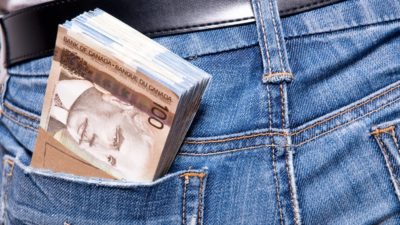Compared to the benchmark 10-year bond yield of 2.07% and the average Canadian stock dividend of 2.4% over the past decade, any yield that approaches double digits seems instantly attractive. After all, a 10% dividend reinvested in a stock that stays flat could double your investment in seven years.
Last week, Gluskin Sheff + Associates (TSX:GS) seemed to approach that 10% mark as the stock cratered. GS is now one of the highest dividend-yielding stocks listed in Canada. It’s also a company that seems to be flying under the radar, without much analysis or chatter from the investment community.
That prompted me to take a closer look.
Gluskin Sheff is a wealth management company that was started by two financial professionals, Ira Gluskin and Gerald Sheff, and nearly $26 million in assets under management (AUM) back in 1984. According to the company’s website, $1 million invested with the company at inception would have nearly doubled by June 2018.
The company currently manages assets worth over $9.1 billion. That means the AUM has compounded at a rate of 18.8% over the past 34 years. It has 17% of the outstanding shares held by the company’s management and senior employees, which means the leadership team has skin in the game.
Like any other wealth management company, GS earns management and performance fees on this AUM. Over the past fiscal year, the company claimed base management fee at 1.22%, which seems to be relatively stable over the years. The annual report states management fees totaled $109.6 million, while the performance fees were $31.6 million.
Is the dividend too good to be true?
The sustainability or the growth potential of the dividend is the most important factor. GS stock has been clobbered over the past five years, like other dividend-paying stocks. It reached a peak of $33.4 in early 2014. It’s now down to $10. If it continues paying $0.25 every quarter in dividends, the yield would cross 10%.
Basic earnings per share were $1.24, while diluted EPS worked out to $1.21 for the year ended June 30, 2017. That means GS earned more in net income than it paid out in dividends. However, the EPS for the most recent quarter was just $0.25, which is in line with the quarterly dividend.
It’s important to note that the bulk of annual earnings are concentrated in the December quarter (possibly because the company collects annual management fees).
Last year, the EPS crossed $0.61 in the December quarter. Considering the fact that the company’s AUM has grown 2.24% over the past year, this upcoming quarter could be marginally better. That should cover the dividend.
However, the company only has $29 million in cash and short-term investments, so a sudden drop in AUMs or EPS will have a direct impact on the dividend.
It’s been a tough year for stocks across the world, so there’s no saying how much in performance fees GS can expect or whether it’ll offer another special dividend to investors like last year. But as long as the fee rate and AUM remains stable, I think yield-seeking investors with an appetite for risk may find GS interesting.








